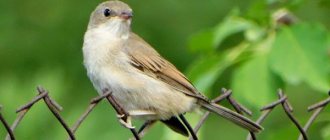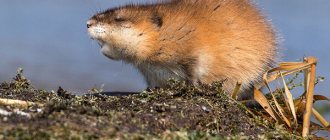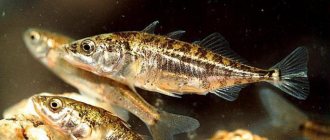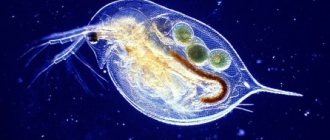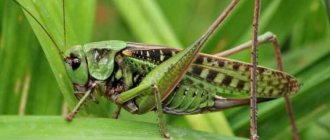Next you will learn:
- Due to which gray rats managed to become one of the most widespread and numerous mammals on Earth;
- What unique abilities do these animals have and what are they capable of in case of danger;
- Where and how pasyuki live and why they manage to successfully dislodge black rats from their habitats;
- What do gray rats eat and how long can they live without food and water;
- What diseases do these rodents carry (besides the well-known plague, which can be contracted by the bite of rat fleas);
- And finally, what are the benefits of gray rats for humans?
There is probably not an adult in the world who does not know what a gray rat looks like. Indeed, this rodent is noticeable and famous: it can be found in the basement, in the entrance, in the attic or in the courtyard of a residential building, it often turns out to be the hero of various films (usually as the personification of abandonment and dirt), and when tamed by humans, attracts surprised looks from children sitting in a cage at a bird market or in a pet store.
This may even seem strange: do gray rats - so plain, ugly and without outstanding physical characteristics - really deserve to be such famous neighbors of humans?
It turns out they deserve it. The gray rat, also known as pasyuk, is one of the most numerous mammals on Earth. According to scientists, the number of rats around the world is approximately twice the number of people (in large cities around the world there is approximately one rat for every citizen).
In addition, the gray rat is a rodent that is strongly attached to humans. In the largest numbers, representatives of this species live either in structures built by people or in cultural landscapes. This means that, willy-nilly, animals catch the eye of a person, affect his economic activity, cause harm and can even be dangerous. It is almost impossible not to notice them or not to pay attention to them.
Due to its high numbers and desire for closeness to people, the gray rat turns out to be one of the most significant animals for human civilization in general. Every year, all over the world, these animals destroy millions of tons of grain, cause thousands of people to become infected with dangerous diseases, and sometimes their activity even causes accidents and man-made disasters. Huge sums of money are spent annually on fighting them and eliminating the consequences of their life activity.
On the other hand, rats do more for science than any other animal species. Millions of these animals are tortured and killed in laboratories every year, giving humans new knowledge in the field of medicine, anatomy and physiology, helping to test numerous products and drugs.
Additionally, rats are very common pets. White, spotted, red and even gray-blue animals, born and raised in captivity, often become real family members, completely tame and unpretentious. Moreover, thanks to their intelligence and activity, they are no less interesting than more traditional human companions - cats, dogs, or, for example, parrots.
We can say that rats, together with people, own this world. Moreover, man, who is almost ready to colonize other planets and, it would seem, has conquered nature on Earth, is powerless against the pasyuks: these animals breed right next to him, interfere with his life, take away his food and, by their very existence, seem to mock his power.
What helps them to be so ubiquitous and indestructible? We'll look at this in more detail below...
Appearance of a rodent
The general appearance of the animal is known to everyone: the gray rat is a medium-sized rodent, and of all the rats in Russia it is the largest. The only larger ones are gophers, marmots, beavers, nutria and other rodents that are not rats.
The length of the animal reaches approximately 19-24 cm, the length of the tail is 12-19 cm. It is noteworthy that the tail of the gray rat is never longer than the body, which is one of its differences from the black rat.
Photo of a large gray rat:
The color of the pasyuk's coat is usually not completely gray, but brownish, although young rat pups are precisely gray, and as they grow older, they develop a reddish coloration. The animal's abdomen is light, almost white. Very rarely - in about one animal out of 1500-2000 - pure black individuals are found. However, despite the coloring, from the point of view of species they continue to remain typical gray rats.
On a note
The Pasyuk's fur contains a large number of guard hairs, longer than all the others. Therefore, gray rats often look somewhat disheveled and “untidy” (as if dirty).
The picture shows a gray rat having a meal:
The tail of a rat is an object of disgust for many aesthetes. It is naked, covered with sparse short transparent hairs and a rough epidermis resembling scales.
Gray rats are quite easily distinguished from their relatives, with whom they live together in different parts of their range. For example:
- Reliable species identification of gray and black rats is carried out by measuring the mass and size of the body, as well as the length of the tail: the pasyuk is larger, heavier, its tail is always shorter than the body. The appearance of the animal is also assessed - the black rat has larger eyes and ears, an elongated muzzle, and a more “fluffy” tail. Experts are also able to distinguish these species based on their skeletal features. For example, the pasyuk has fairly straight parietal crests of the skull, while in the black rat they are strongly curved. It is noteworthy that there are light populations of black rats, the representatives of which are very similar in color to their gray counterparts;
- The pasyuk differs from the Turkestan rat in having coarser fur and larger size.
The photo below shows a gray rat:
And here it is black:
And the appearance of the gray rat itself is heterogeneous. There are at least two of its subspecies - Rattus norvegicus caraco, indigenous, smaller, common in Transbaikalia, the Far East, Mongolia, Korea and Eastern China. And the main one is Rattus norvegicus norvegicus, found in all other parts of the range.
Interestingly, the Latin name for the gray rat is a consequence of a scientific error. This species was described by the British zoologist John Berkenhout, who noticed that pasyuks are most numerous in port cities. He decided that the animals sailed to England on ships from Norway, and suggested that it was in Norway that their natural habitat was located.
As a result, he gave the animals the specific epithet “norvegicus”. The irony is that in reality, at that time, gray rats had not yet penetrated into Norway, and most likely came to England from Denmark.
However, the subspecies that has spread throughout the world is named by the same epithet, because it was the one that was described for the first time, for science it is nominative, and according to tradition, its subspecies name duplicates the specific one. Such a forced double mistake...
On a note
Today, taxonomists believe that domestic and laboratory rats have developed a sufficient number of specific features to distinguish them into a separate subspecies.
On agricultural lands in Russia, the gray rat can be confused with some other animals. Most often, a water vole is mistaken for it - a rodent of the hamster family, which is really similar to the pasyuk in color and body size. But the water vole has shorter legs, and the head is even more massive and less elongated.
Photo of a water vole:
And for comparison - a gray rat:
In northern regions, rats (especially young ones) are sometimes confused with voles or lemmings. Upon closer inspection, such errors are quickly revealed: rats are usually larger, have a slimmer body and a longer tail.
The mistakes themselves are due to the fact that the animals are noticed out of the corner of the eye when they make their way through the grass or quickly hide in holes. In addition, the further north you go, the less often representatives of this species are found outside human habitation, which means that an animal caught somewhere in the taiga is most likely not a rat.
It can be gigantic
An ordinary person understands a rat as the most common species on the planet - the Norwegian, or gray (Pasyuka), and its domesticated relative, which is bred in homes.
There are legends that these creatures grow almost to the size of a cat. This is not true - pasyuki do not grow. The largest of them rarely reach 50 centimeters including the tail and gain 450 grams.
But... In nature, there is not only this type of rat. In New Guinea, during the filming of a BBC nature film in 2009, a completely new species was discovered in the crater of the Bosavi volcano.
It was named the Bosavi woolly rat. This miracle of nature reaches 82 centimeters (including the tail). This “rat” weighs about 1.4 kg. And she is not at all afraid of a person whom she has never seen during her volcanic life.
Rat.
creativecommons.org
Rat.
creativecommons.org
Rat.
visualhunt.com
Lifestyle and basic habits of the gray rat
The lifestyle and behavior of rats can be quite accurately described in two words: plasticity and versatility.
Indeed, the main feature of these animals is their highest adaptability to living conditions and the rhythm of human life. For example, gray rats living in nature or in houses lead a twilight and nocturnal lifestyle, and prefer to spend daylight hours in their shelters. Individuals living at agricultural enterprises often lead a diurnal lifestyle, collecting grain that scatters during the day, and rest at night when the garbage is removed.
On a note
Moreover, two rats living in the same house may have different activity schedules - nighttime and daytime. Even the same individual quickly reacts to changes and easily switches from one mode to another if this makes it easier to find food and reduces the risk of being noticed and caught.
Pasyuki usually live in small groups of 5-30 individuals, less often - alone or in very large organized colonies. Each group has a dominant male, who has priority when mating with females, and secondary males.
It is also useful to read: Why are rats dangerous to people and what diseases do they carry?
Old females are kind of leaders for young animals and younger females. At the same time, neither the group nor the colony exhibits collectivity in searching and obtaining food: each animal looks for food independently (that is, there is no mythical rat king who is fed by his subordinates). Hierarchy manifests itself mainly during reproduction.
In many cases, groups are formed from the offspring of one or more females.
Each group of animals has its own territory, which they protect from rats from other families. Depending on the abundance of food, such an area can range in size from 500 to 2000 square meters, and there are trails and shelters laid out and marked with scent.
Gray rats make nests in a wide variety of secluded places - burrows, hollows, spaces under stones, cracks in walls. Sometimes these animals show remarkable architectural abilities, creating nests from grass or any other suitable materials - paper, feathers, bags.
Selection
The greater fertility of rats helps to breed numerous breeds of them. They differ mainly in the color of their eyes and fur. There are even sphinx rats (hairless), downy rats (with delicate fluff instead of fur) and double rex rats (these areas on the body that are covered with fur change throughout their lives). A hybrid of a pasyuk and a decorative rat, which has lost some of its former talents, can also be obtained. This is what they do in the “Home Pasyuk” project. Children from such a union are born not only of a wide variety of colors, but also stronger and more intelligent. True, sometimes these offspring turn out to be somewhat aggressive. In general, messing with rats is very interesting. They are affectionate, clean animals, eat little, are trained and take up very little space in the apartment.
What do gray rats eat?
Gray rats stand out among other rodents in that a significant proportion of their diet is animal food. With a sufficient abundance of food resources, their diet consists of 60-70% plant foods and 30-40% animal products.
Pasyuki willingly eat fruits, vegetables, grains, groceries, semi-finished products, meat, fish, eggs, milk - absolutely everything that humans eat. However, with a limited choice of food, gray rats can eat either exclusively plant foods or only animal products.
For example, the following extreme cases are known:
- On some tropical islands, populations of rats have been found that never come down from the trees to the ground. Many generations of them live in the crowns of tropical palm trees, feeding on the core of coconuts and young leaves, only occasionally and with luck introducing diversity into such a vegetarian diet due to chicks and eggs, as well as mollusks and insects. Although most of these “tree” rats are black, pasyuks are also found among them;
- Rat colonies have been found in industrial freezers in slaughterhouses. The animals lived at a constant temperature of about -18°C, built nests inside frozen carcasses, lined them with tendon fibers, and safely hatched their young. Their only food was frozen meat, since they could not get out of such chambers and get other food;
- Rats thrive in landfills near slaughterhouses. Here they feed on skins and offal;
- On the beaches, pasyuki live off emissions from the sea. They feed on algae, crustaceans, crabs, mollusks, dead fish and eggs of birds nesting here.
In general, the gray rat is a universal consumer. She is able to eat almost anything that can provide her body with calories. With a lack of normal feed, animals supplement their diet with tree bark, hay, paper, feces, not to mention grass, carrion, rotting and fermented fruits and vegetables.
This is interesting
It is due to omnivory that gray rats, by the way, solve their main physiological problem: they are not able to starve for a long time. At most, the animal can survive without food for 3-4 days. But if a rat has access to dry food (for example, grain), but does not have the opportunity to drink, it will die only after 2-3 weeks due to dehydration.
In practice, these animals are rarely hungry: they eat mold and moss, lick dew from the stone walls in the basement, gnaw the corpses of fallen brothers without a twinge of conscience, digest sewage and feel great at the same time.
Often, a rat turns into a formidable predator: the animal can attack ducklings, gnaw out the webs on the feet of dormant birds, gnaw the skin on the feet of elephants, and bite sleeping people. Together with black rats, pasyuki destroyed or contributed to the extinction of dozens of species of birds that nested on remote Pacific atolls: having arrived here with random ships, they switched to feeding on eggs in the nests, and the birds themselves, who had never known predators before, did not have time to adapt to the emerging threat.
Perhaps only the lack of food may be the only limiting factor for the spread of gray rats. That is why they do not live in nature in temperate climates: in winter they simply do not find enough food for themselves under the snow. If they had access to at least some food at this time of year, they would live here too, without fear of the cold.
This is interesting
Rats do not store food. This is partly why they cannot compete in their natural habitat with rodents in the alpine zone and with the same lemmings in the tundra, and do not survive where other rodents - voles, hamsters, gerbils - feel normal.
But omnivorousness and high adaptability to different conditions are not the only qualities of gray rats that make them prosperous and indestructible...
Can drive a car
The extraordinary nature of these animals is also evidenced by an experiment recently conducted by scientists from the University of Richmond - the team of Professor Kelly Lambert, who built small cars.
The chassis and drivetrain were made from a robot car kit, and a clear plastic food container became the body. Explaining the idea of a steering wheel and pedals to the rats was too difficult. Therefore, management has been simplified. The rat had to stand on the plate and grab the copper rod - due to this, the circuit was closed and the engines turned on.
It's a paradox - but rats learned to drive a car. Three five-minute sessions per week for eight weeks were sufficient. Naturally, treats were also used. It is characteristic that those who had previously lived in a complex environment - multi-level cages with different objects for games - were more trainable.
A rat is taught to drive a car.
arstechnica.com
The physical abilities of gray rats, or how these animals have taken over the whole world...
At first glance, gray rats do not have any special physical abilities. They are not big, not strong, and have poor eyesight.
And yet, they use the complex of physical data that nature has endowed them with maximum efficiency:
- Pasyuks do not have spatial conservatism, that is, they are not attached to any specific place of life. If animals have the opportunity to move to other places and such movement is beneficial to them, they boldly disperse. Due to this, gray rats very quickly spread throughout the world: some rats penetrated from river valleys to fields, their descendants - from fields to villages, descendants of descendants - from villages to cities, then - from cities to ships, and finally - from ships to new cities or uninhabited islands;
- Gray rats are very active. The animal can run more than 15 km in a day, and in case of danger it accelerates to 10 km/h, jumps 1 m in length, climbs over a wall 80 cm high. A rat is able to crawl through the hole through which its head goes, and if you flush it down the toilet, it will dive under the water seal and come back out;
- These animals swim well - in experiments the animal could stay on the water for 3 days. Sometimes rats catch prey in the water - frogs, water beetles, newts and waterfowl chicks;
- Experiments have confirmed the presence of abstract thinking in rats. The main practical benefit of it is the ability to avoid baits with poison;
- Pasyuki have an excellent memory. The animals quickly remember travel routes, orient themselves well in complex sewer systems, and remember the appearance and smell of poison the first time;
- These animals hear very high sounds - up to 40 kHz (twice as high as the average human ear can hear). By the way, the operating principle of ultrasonic repellers is based on this;
- Pasyuki are bold and aggressive. Being driven into a dead end, the gray rat boldly attacks its pursuer, including humans, while the female desperately defends the nest. Not all cats know how to catch rats precisely because of their active self-defense;
- Gray rats normally tolerate a short-term decrease in temperature to -45°C and an increase to +55°C, and successfully reproduce in the temperature range from -18°C to +42°C in the presence of high-calorie food and water;
- Pasyuki are very prolific. Each female gives birth to from 2 to 20 cubs, which, in turn, become sexually mature at 6 months. 18 hours after giving birth, the female is ready to mate with males and become pregnant again, on average giving birth to a litter every two months.
This is interesting
Gray rats are known for their resistance to radiation; they can normally tolerate radiation up to 300 roentgens/hour. On some Pacific atolls over which atomic bombs were tested, rats were the only surviving mammals.
But, perhaps, the main advantage of pasyuks over other animals is their ability to adapt to being close to humans. When most other animal species become extinct under anthropogenic pressure, gray rats thrive in and near human habitation, and living conditions here turn out to be even more favorable for them than in the wild in their original habitats.
There, in the wild, over thousands of years of existence, these animals have not become either particularly numerous or very common. And only after penetrating human habitation did they begin their triumphal march around the world. We can say that it was man who made the gray rat his main parasite and competitor...
In general, the increase in the number of gray rats is an example of the prosperity of a species that has benefited from human changes in the environment and which has found itself in ideal conditions of existence.
Features of behavior
These creatures prefer to live in groups and endure loneliness only when necessary. The family always has a main male, a pair of his deputies, a harem of females and simple members (young individuals, weak males) who do not take part in reproduction. There is no mutual assistance between them, just like there is no communal labor like ants or bees. Among rats, everyone cares only about themselves, but if a stranger suddenly joins the family, they kill him together, although, in principle, they are not aggressive and do not attack unnecessarily.
The gray rat also resorts to the help of its fellow tribesmen to obtain food. The photo above shows how they steal birdseed as a well-coordinated team. Another feature of a collective organization is the fact that a poison that kills one member of the family will be avoided by others. These animals are smart and quick-witted. An experiment was conducted in which cheese was placed in a maze, and the rat not only quickly found the treat, but also remembered the path, and if the food was moved to another place, the animal no longer used the old path, although the smell of cheese remained there.
Where are gray rats common today?
The gray rat inhabits almost the entire globe, with the exception of the polar regions. It is believed that its original habitat was in Eastern China, from where the animal began its victorious march around the world. Today, most pasyuks live in Southeast Asia, Central Africa, the southern United States and Western Europe.
It is also useful to read: Black rats: photographs and interesting facts about the life of these rodents
The habitat of the species is quite heterogeneous. In many countries, gray rats are found only in cities; in some places they are not found in large areas. For example, in the Canadian province of Alberta this species was registered only in recent years.
The fact is that the gray rat, which is cosmopolitan, is a synanthropic animal and expands its range specifically in cities and villages. From here, in tropical and subtropical climates, individual animals move into the wild, but this happens slowly, and therefore in many countries the range of animals is a set of points in cities and villages against the backdrop of vast spaces in which there are no representatives of this species.
In natural biotopes, the gray rat lives near water, in wet meadows, in steppe and desert oases. It does not climb high into the mountains and avoids places with sparse vegetation.
However, in the north these animals do not leave the cities at all. In the temperate zone (approximately to the latitude of Saratov), gray rats spend the winter in human housing, and in the warm season they settle in agricultural lands. South of the 50th parallel, the Pasyuki form permanent settlements in the wilderness.
Prevention measures
To ensure that rats are as little interested in your home as possible, you need to monitor its condition and follow the following recommendations:
- do not leave trash and keep order in the area around the house;
- eliminate the presence of even the smallest through holes in the walls or roof;
- get rid of sources of standing water on the site;
- do not leave leftover food outside at night;
- get a cat or dog of a breed that is excellent at hunting rodents.
Relationship with a black fellow
It is believed that initially (several centuries ago) black rats entered Europe from Asia, at that time they were more common and less dependent on water. They are smaller than gray ones, actively settle on the upper floors of houses and are especially drawn to life on sea and river vessels. It was their last feature that determined their involuntary travel and migration, first to Europe and then to the New World.
But as soon as gray rats began to enter the port cities of Europe, the black ones had to make room. This is largely due to the aggressiveness, larger size and greater fertility of its gray counterpart. In general, the displacement of a black rat by a gray rat is an example of interspecific competition: both species feed on the same food and settle in similar places, but with limited resources, the gray rat displaces the black rat, simply depriving it of food and convenient shelters due to rapid reproduction.
However, since gray rats are more likely to live in basements and various agricultural enterprises, and black rats prefer attics and ports, in many habitats these species do not meet with each other and do not compete with each other. Today, in inland (remote from the sea) cities of Europe, Russia and the USA, the gray rat has practically replaced the black rat, and the latter only lives in the attics of some houses, while in most port cities approximately 75% of rats are black.
In particular, in Moscow and the Moscow region there are few black rats, and gray rats are the dominant rodents both in the city center and in the provinces.
On a note
It is the gray rat that is otherwise called pasyuk. Sometimes people call it a barn rat, but in this case, conflicts are possible: if black rats live in a granary, they will also be called barn rats. In villages, the common household name for the black rat is the roof rat, since these rodents actively settle in the thatch or reed roofs of houses and sheds. Gray rats avoid heights and rarely settle on roofs.
In nature, gray and black rats occupy different ecological niches and do not compete with each other. Black rats do not need water so much, and therefore they settle en masse in fields, steppes, and gardens, where the gray rat does not penetrate. In addition, the natural range of the black rat is wider: for example, it originally lived in the Crimea and on the Black Sea coast of the Caucasus.
Preventive protection measures
Rats are primarily attracted to food, water and shelter in the home. Therefore, it is necessary to limit access to each component.
Reduce food sources: Trash cans should be covered and emptied regularly. Bird food should be in specially designated feeders. Rats can even feed on bird excrement, so it is necessary to create separate feeding areas.
Reducing water sources: eliminating basement leaks; removal of direct sources of water, such as tanks, barrels from the surrounding area; eliminating the possibility of basement flooding.
Eliminate entry points: sealing holes and cracks in basements.
What diseases do these animals carry?
Perhaps most of all, gray rats are dangerous because they are carriers of various human infectious diseases.
The most terrible plague epidemics in Europe in the Middle Ages, which claimed millions of human lives (according to historians, a sixth of the European population died out from them), arose precisely because of rats.
Fleas that parasitize rodents are carriers of the plague bacillus, and when rats settle in houses, these insects actively attack a person and bite him, infecting him with the disease. Moreover, this danger continues today: in many settlements of gophers and gerbils - natural reservoirs of the plague - there are also pasyuks that can carry the pathogen into populated areas.
This is interesting
Black rats are more likely to carry the plague, but it was the pasyuks that played a major role in the spread of epidemics due to their larger numbers.
In addition to the plague, pasyuki carry several other deadly diseases:
- Cryptosporidiosis;
- Q fever;
- Typhus;
- Leptospirosis;
- Pseudotuberculosis;
- Sodoku;
- Brucellosis;
- Trichinosis.
Also, most gray rats are infected with helminths, and when food spoils with their excrement, there is a high risk of transmitting parasites to humans. In particular, two types of tapeworms that parasitize pasyuki are dangerous to people.
How to get rid of a pest
Gray rat.
Getting rid of Gray rats is quite difficult, since this rodent is very prolific and can produce up to 6-8 litters per year. There are a number of methods that will help expel them from the site or from the house:
- toxic chemicals;
- mechanical traps;
- traditional methods.
Follow the links to read in more detail about how to expel rats from your property or barn.
Economic importance of the gray rat
Today, the gray rat’s main harm to the national economy is food spoilage. Moreover, due to the omnivorous nature of these animals, they cause harm almost everywhere and at all stages of technological chains:
- In some regions of Asia, during the years when their numbers surge, rats completely destroy grain crops in the fields. In these cases, poor peasants have to hunt for hundreds of pasyuks with sticks and eat them, or sell the rats themselves to restaurants for exotic lovers in order to earn a livelihood. According to statistics, in Southeast Asia alone, rats eat about 48 million tons of grain annually, worldwide they destroy up to 30 million tons of wheat and rice annually, and in the Caribbean they get about 10% of the sugar cane harvest;
- Rats are harmful in storage facilities. They destroy and contaminate huge amounts of grain; they spoil any food products in warehouses, from fruits and vegetables to groceries, semi-finished products and meat;
- Finally, pasyuki are guests of restaurants, canteens and supermarkets. If they cannot penetrate kitchens and warehouses, then they feel at ease near garbage containers. And when they do get into the kitchens, they not only eat some of the food, but also contaminate it with hair and excrement.
Moreover, all the enormous losses are due precisely to the large number of rats. Each individual animal does not eat that much per day - about 50-60 grams of food, but hundreds or thousands of them, living in a factory or transshipment base, remove significant amounts of food from the production process.
In addition, pasyuki cause harm by chewing through wiring (animals need to constantly gnaw something to wear down their rapidly growing teeth), leading to short circuits, fires and equipment shutdowns; they make holes in dams and barrier structures, which often causes leaks and accidents And when they die from poisoning in homes and office buildings, their corpses, decomposing, create conditions unbearable for human life and work.
Nutrition
The pasyuk rat is an omnivorous animal. In nature, her menu includes grains, vegetables, fruits and, of course, proteins: eggs, chicks, fish, seafood (stolen or thrown onto the ground), insects, small rodents, sometimes even feces. Having settled near humans, the rats somewhat changed their gourmet tastes. Now their menu includes any leftover food, unattended food (especially grain in granaries), as well as electrical wiring, books, and other things people need. An interesting fact: in order to get a tasty morsel, a rat is able to squeeze into a hole where its relatively small head could fit. Pasyuki have chosen warehouses, basements, subways for themselves, and in their homes they freely travel through the sewer network and garbage chutes.
Pasyuki and domestic (decorative) gray rats
It is interesting that, despite all their harmfulness, gray rats managed to become pets. Today, numerous decorative breeds are known - white, gray-white, red, black-and-white, husky, hairless, curly and others. You can buy them at any pet store, but the main problem that will arise in a few months is where to put the offspring.
Like its wild relatives, the domestic gray rat's litter contains from 5 to 20 rat pups, which quickly grow on homemade food and themselves begin to reproduce at the age of six months.
This is interesting
The natural, “basement” coloring of a domestic rat is considered chic and exclusive. Rats with such a natural fur color are usually more expensive than regular gray-white ones.
Domestic rats easily get used to people, are not afraid of them, take food from hands, love to be stroked and are easily trained. At the same time, it is difficult to train them to use the toilet, and therefore the big gray rat rarely becomes a full-fledged pet, moving freely around the apartment.
But people owe a lot to laboratory gray rats. It is on them that certain features of the physiology of mammals are studied, drugs, cosmetics and poisons are tested on them, they allow people to look into the depths of ethology and find remedies for various diseases.
Descriptions of many experiments on gray rats can horrify even people with a strong psyche: often the animals are deliberately provoked to develop cancerous tumors or are poisoned with toxic substances, and vivisection is performed. But without such cruel experiments, the development of many drugs that save thousands of human lives is impossible. Therefore, all losses of crops and products due to the gluttony of rodents living freely with us can be forgiven precisely for the invaluable contribution to the development of science that their laboratory brothers make against their will.
Interesting video about the natural life of the gray rat in nature
Harm to human farmer
In a household, an ordinary rat causes quite a bit of damage.
- They eat and steal harvests of grain, beans, and beans from barns. They damage storage containers (bags, boxes, boxes). They chew vegetables and fruits.
- In a suburban area, rodents prefer to feast on vegetables, berries, fruits, roots of plants and garden flowers.
- Pasyuki gnaw through the walls of buildings and barns, damaging furniture and wires. Chewing not only affects the appearance of a residential building, but can also cause short circuits and fires.
- Rats pose a danger not only to human health. Cases of rodent attacks on pets are not uncommon.
